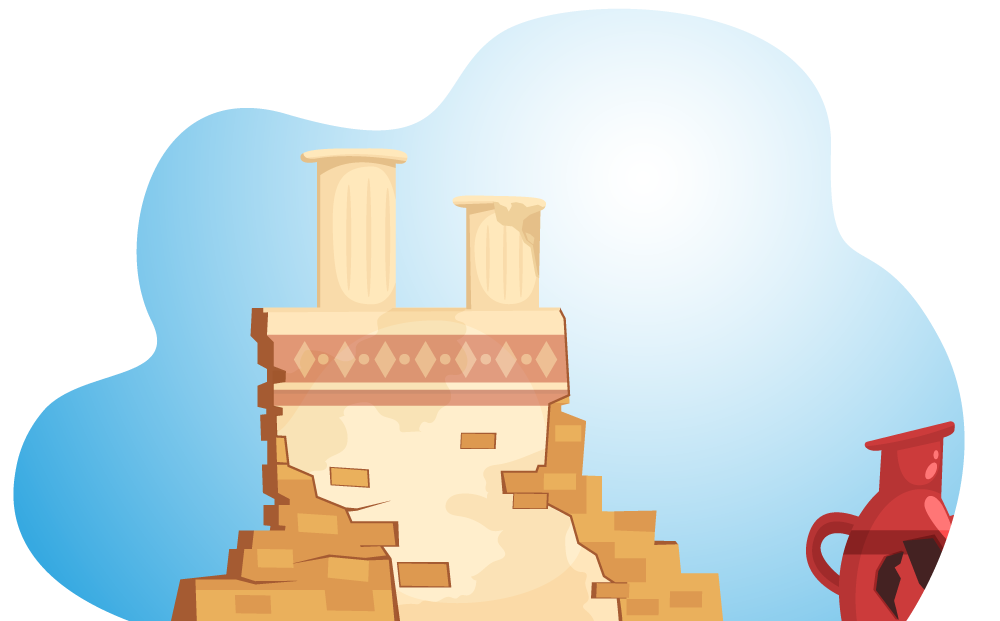Knin Fortress is one of the largest and oldest European fortresses. It originates from IX. century, and got its final appearance in the early XVIII. century. It is one of the largest Croatian fortification monuments and second largest military fortification in Europe, taking up an area of 123,143 m2. Fort can be divided into five parts: Upper Town, Middle Town, The Castle Lab, Lower Town, and Belveder station. Each of these parts of the fortress can also be considered an independent fortified city. It is a living cultural monument and represents the strongest tourist asset of Knin.
Krčić Waterfall is the end of the ten-kilometer-long river Krčić, which springs at the foot of the Dinara. It is 22 meters high and 30 meters wide. Krčić is a kind of natural wonder because it flows exactly into the source of the Krka River, and this phenomenon has not been recorded anywhere else in the world. The waterfall is most attractive in spring and autumn, but dries out completely during summer. Then the crystal clear source of the Krka River of blue emerald color comes to the fore. The source of the Krka River consists of three permanent springs. The main spring is located in a cave below the Krčić waterfall. The other two springs are located on the left bank of the Krka, the first 50 meters downstream from the waterfall and the second 150 meters downstream.
One of the most beautiful rivers in Europe, 72.5 kilometers long. Knin is located on the right bank of the upper course of the Krka River. Enjoy this magical river along the 3km long hiking and cycling trail that connects the city with the popular Krčić waterfall and the source of the Krka River.
Confluence of the Krka & Butižnica Rivers is known as Sastavci among the citizens of Knin. This artificial confluence was made due to large and frequent floods, so an embankment was built which moved the confluence of the Krka & Butižnica Rivers 2.5 kilometers downstream. Today, the embankment is a favorite place for walking, running and cycling.
Three lakes and two larger springs are called Šarena Lakes, and they are located southeast of Knin. They are called Šarena (Colorful) because of the change of colors during sunrise and sunset, when all the colors from the sky are reflected. Their average depth is 11 meters, and in some places they are deep 30 meters
Burum Lakes are also located northeast of Knin, and are about 1 kilometer away from the Colorful Lakes. Their average depth is 5 meters.
Both the Šarena and Burum Lakes are rich in fish. Take a walk along the calm waters of these lakes and enjoy their beauty.

This ancient and archeological site is located at the confluence of the Kosovčica & Krka Rivers. It was named after the seat of the Knin bishop.
The Benedictine monastery on Kapitul was founded in the 9th century during the reign of Prince Trpimir. On the site of the former monastery in the 13th century, the cathedral of the bishop of Knin was built. Archaeological excavations have found a large number of decorative fragments with plaited ornaments, a large number of Old Croatian and later medieval tombs with finds of earrings, spurs and rings.
Spas Hill is located at an altitude of 345 meters, 100 meters above Knin. It stretches along the northwest-southeast axis. On the south side rises the Knin fortress, and on the north side there is a plateau. This part of the hill was separated from the southern part by an artificial gap at the beginning of the 18th century. Archaeological excavations carried out in the northern part of the hill have established the existence of fundamental architectural remains of the Roman settlement of Ninia. Spas Hill is not sufficiently researched, so it probably hides many more interesting stories from the past.

Commercial Court in Zadar - permanent service in Šibenik, Reg. No.: 110036398

More information about EU funds at: www.strukturnifondovi.hr
More about the Operational Program "Effective Human Resources" 2014 - 2020 at:
http://www.esf.hr/operativni-program/
The development of the website was co-financed by the European Union from the European Social Fund